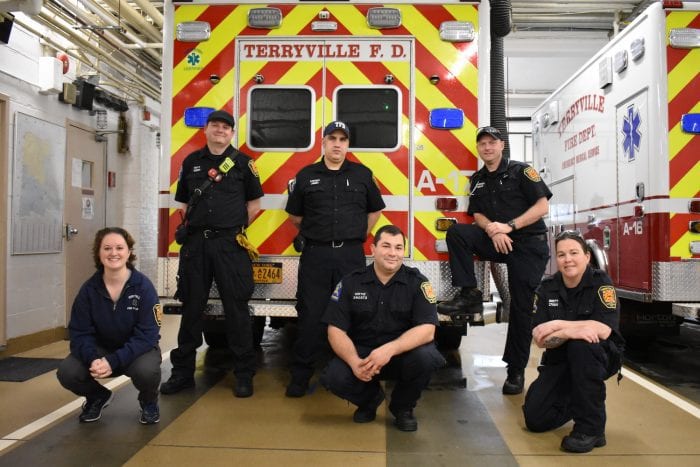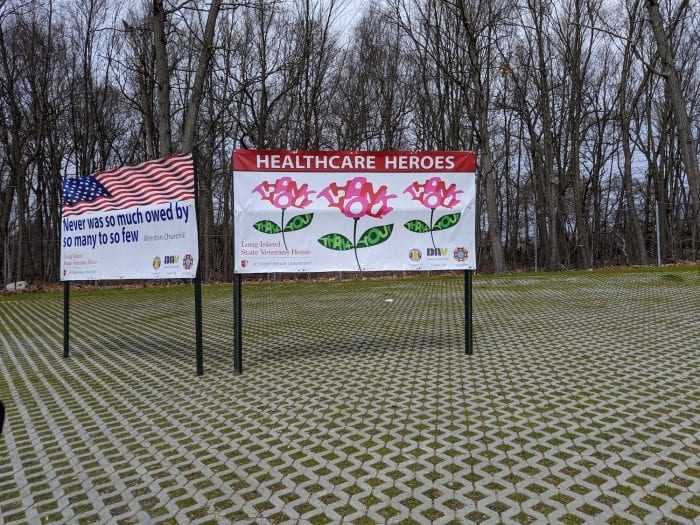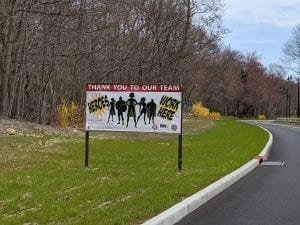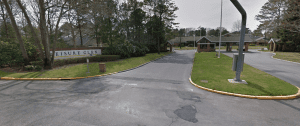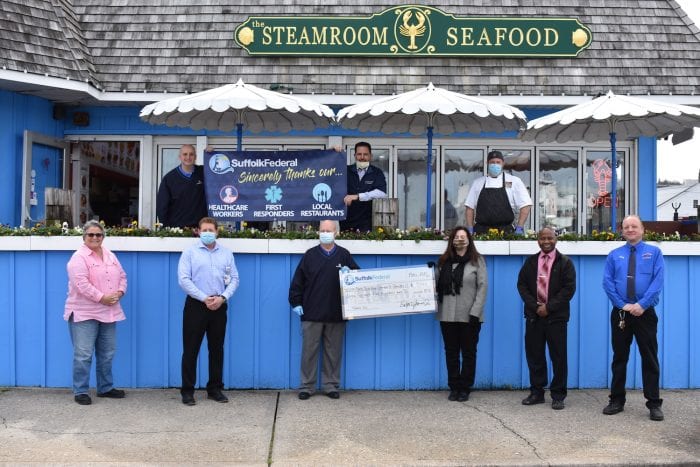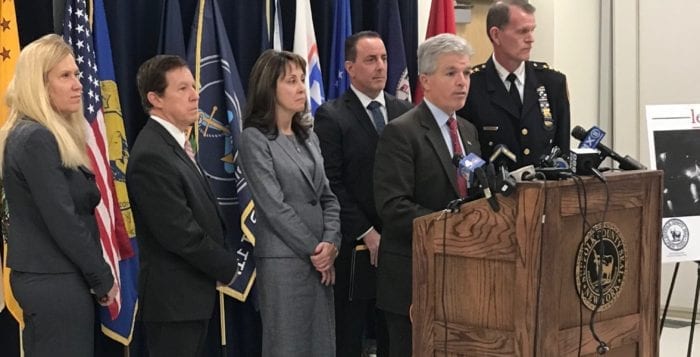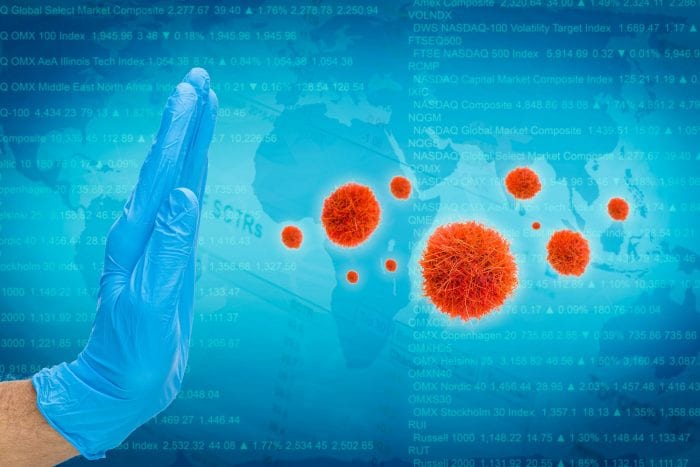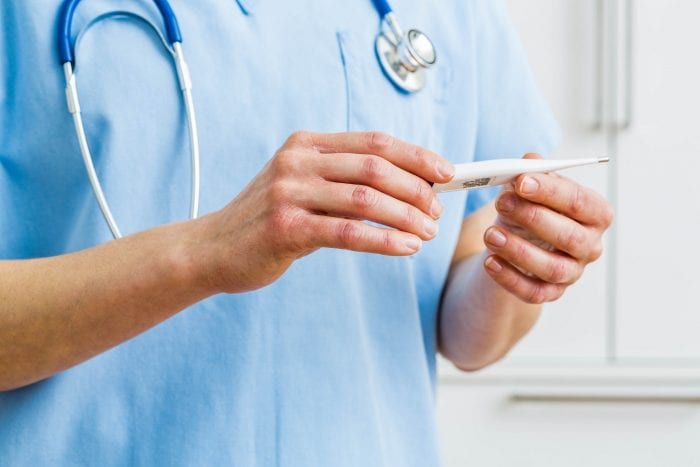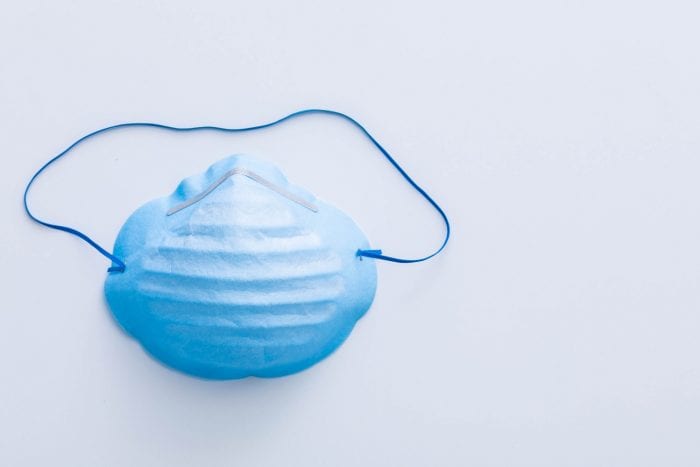If we are to keep using war terms to describe the ongoing coronavirus pandemic, calling nurses and doctors “soldiers” who are “on the front lines,” whose personal protective equipment are like “tools” or “weapons” in the fight against COVID-19, then the Emergency Medical service members, whether paid or volunteer, truly are the ones who make first contact with the enemy.
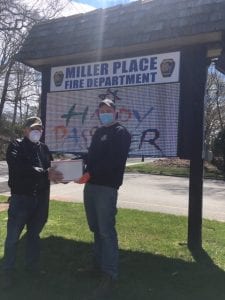
Though members of local EMS services said they don’t know exactly how to feel about that terminology. If anything, it’s the unknown of every situation that makes the whole thought stick.
“Every patient is a risk,” said Daniel Ortiz, an EMS member of the Terryville Fire Department. “That’s where I guess they say it’s a war zone, because you don’t know what you’re walking into.”
EMS members from all over the North Shore have experienced a heavy time of stress during the ongoing coronavirus pandemic, though as the number of cases seems to have plateaued as New York enters the middle of April, these service members, both paid and volunteer, are still asking people to continue their social distancing, as we’re not out of the woods yet.
The emergency service members said they have been wearing much more gear than normal, including masks, head coverings, face shields and eye protection. Every single call they go on is in this gear, since every case is now treated like a COVID-19 situation, despite what might have been said by the caller on the phone.
“We trained for this, and I can honestly say this is the first time in 10 years that I’ve seen anybody suit up other than your annual refresher,” said Terryville member of the EMS squad Andrew Hoyt.
While the Terryville Fire District only covers about eight square miles, the Commack Volunteer Ambulance Corps. covers nearly 15 square miles, dipping into both the Huntington and Smithtown townships.
Joseph Vollers, the 3rd assistant chief of the Commack corps., said they have been helping neighboring districts with their call volumes, including Brentwood, which has been a particularly large hotspot for coronavirus cases. With that, they have gone from one to two full crews with a driver and EMT available at all times. Terryville has effectively done the same, moving from one to two ambulances available.
“It’s a pretty big area we have to cover,” Vollers said.
Other fire districts increased the load and numbers of EMTs and paramedics on a shift. The extra hard part has been decontamination, as now after every call both the people on the truck and the truck itself have to be cleaned from top to bottom.
If the job was stressful before, the understanding that one might be potentially taking the virus home with them after each stress only adds to the level of concern. Most agreed they had never seen anything at this scale. While EMS members knew they had to be aware of contractible diseases, such as tuberculosis, flu, scabies or even bed bugs, the pandemic levels of how far the virus has spread, every single person is approached as if they have SARS-CoV-2.
David Sterne, the Setauket Fire District Manager, said there were five cases of COVID-19 in the department, with more staying home with suspected cases. Though as of now, four of those cases have returned to work. In Terryville, they’ve had two cases out of the 15 paid paramedic staff and 25 volunteer EMTs.
“It’s stressful for a lot of reasons,” Sterne said. “We’re in their environment where there could be infectious viral loads. If a patient is sick, it could be 10 or 15 minutes to take them to the hospital … everyone fears bringing it home to their families and loved ones.”
Sterne added the district has had to make do with a lack of certain items, such as the coveted N95 masks for their medical personnel. New policy has been these masks, which are normally only supposed to be used once and then thrown away, have been used multiple times. Setauket FD had been concerned at several points with limited supplies, but with support from Suffolk County, Sterne said they are now in a relatively good spot.
But support for the fire departments are coming from all corners and some unexpected places. On Wednesday, April 15, retired FDNY Deputy Chief Joe DiBernardo, who is president of the Joseph P. DiBernardo Memorial Foundation, worked with y Fire Hooks Unlimited, a company that manufactures tools and supplies for firefighters and police, to deliver 100 N95 masks to the Miller Place Fire Department and 200 to the Setauket Fire Department.
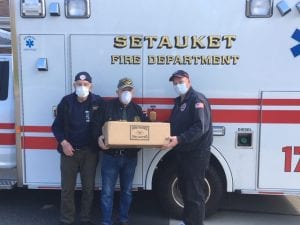
The memorial foundation is for DiBernardo’s son, Joe DiBernardo, who was injured in the line of duty during a tenement fire in 2005. He died as a result from his injuries in 2011. The foundation works to train and equip firefighters in need.
Now the districts have settled into the routine and have seen a small improvement in the number of calls from mid-to-late March, where the number of coronavirus deaths started to rise with startling speed.
With suspected coronavirus patients, it wasn’t so much the usual dealing with people having injuries or back and abdominal pains, it was instead situations where a person might desperately need oxygen. While the numbers of people with heart attacks and other sudden traumas have stayed the same, EMT staff said people calling for respiratory issues tripled in the month of March.
Other, more usual calls of non-life threatening injuries dropped off significantly. EMTs said this was largely because people did not want to go to the hospital where the possibility of viral infection was that much higher.
“I think there’s people afraid to go to the hospital,” said Gina Brett, the Terryville EMS coordinator. “They say, ‘I don’t want to go to the hospital for knee pain, because I might get very sick at the hospital.’”
District officials said that despite the load, they’ve managed.
“Overall it hasn’t been exceedingly stressful where we can’t function,” Vollers said. “Our crews have been amazing at overcoming all stresses, with 2, 3, 4 calls back-to-back, they’ve done a great job.”
Despite the stress, the service members agreed their communities have been excellent in their care and even compassion. The Commack Fire Department, for example, recently held a drive where community members donated over 500 items, both nonperishable food and medical supplies.
Otherwise, EMTs said the best thing for people to do is continue social distancing to help flatten the curve. Another suggestion is after calling 911, people should meet the EMTs and paramedics outside the home in order to best reduce first responders’ interaction with anything that may be contaminated.
“It is an incredibly long time to have that level of awareness and vigilance,” said paramedic Dr. Lauren Moloney, an associate medical director for the Stony Brook University paramedic program. “God knows how long it’s going to go on for. That’s the hardest thing — trying to find what is your date you’re trying to get through.”
This article was amended April 16 to amend the nature of Fire Hooks Unlimited’s operations.
This article was amended April 17 to correct the name of the Commack volunteer ambulance corps.

